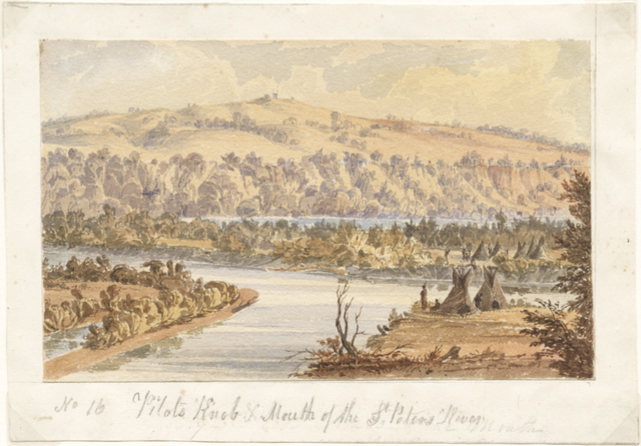Welcome to the Minnesota Humanities Center's Absent Narratives Resource Collection.
.
The Absent Narratives Resource Collection is a searchable database of ready-to-use videos, educator guides, and readings that will support your efforts to include Absent Narratives in your classroom or workplace. Items included in the resource collection have been created or developed by the Humanities Center and its partners. New resources will be added as they become available.
Overview of Resources
Highlighted Resources
Ohéyawahe (Pilot Knob): A Teacher Guide and Supplementary Lessons

"Ohéyawahe (Pilot Knob): A Teacher Guide and Supplementary Lessons for Learning about Mnísota’s First People" was created by Priscilla Buffalohead, Ethan Neerdaels, and Ramona Kitto Stately in partnership with Osseo Area Schools and the Minnesota Humanities Center in 2019.
Learn More
Resource Assessment Tools
These tools provide a framework to respectfully interrogate resources as you seek to include typically absent(ed) narratives into curriculum, public life, and practice.
Absent Narratives Resource Assessment Tool
K-12 curriculum often absents whole cultures and peoples, or relegates their importance to a unit, celebration day, or month. This absence bears a tremendous cost for all students. Curriculum that devalues the contributions of cultures and communities detracts from a message of shared humanity. Use this framework as a guide to assess and interogate resources for use in your classroom and curriculum.
View Resource
Considerations for Selecting and Assessing American Indian Resources
This document is adapted from "Choosing Good Books: Guidelines and Commentary on Assessing Indians in Children’s Literature" (2006) by Gregory O. Gagnon, and the "American-Indian Internet Search Checklist" by the National Museum of the American Indian.
View Resource
Minnesota Social Studies Standards Alignment (grades 6-12)
Bdote Memory Map Social Studies Standards Alignment
The Bdote Memory Map is a geography-based, digital media resource for Dakota people to express connections to traditional places and to help non-Native citizens see Minnesota from an indigenous point of view.
This resource shows how different elements of the Bdote Memory Map align with Minnesota Social Studies Standards (grades 6-12).
View Resource
Why Treaties Matter Educator Guides
Why Treaties Matter is a traveling and virtual exhibit that serves as an educational tool for schools, community organizations, and beyond. in 2013, a team of community members and educators developed educator guides to accompany the Why Treaties Matter exhibit content. These guides provide educators with background, student readings and activities, vocabulary lists, and suggested web and print resources.
See how the seven Why Treaties Matter educator guides, as well as the exhibit video "A Day in the Life of the Minnesota Tribal Nations," align with Minnesota Social Studies Standards (grades 6-12).
View Resource



